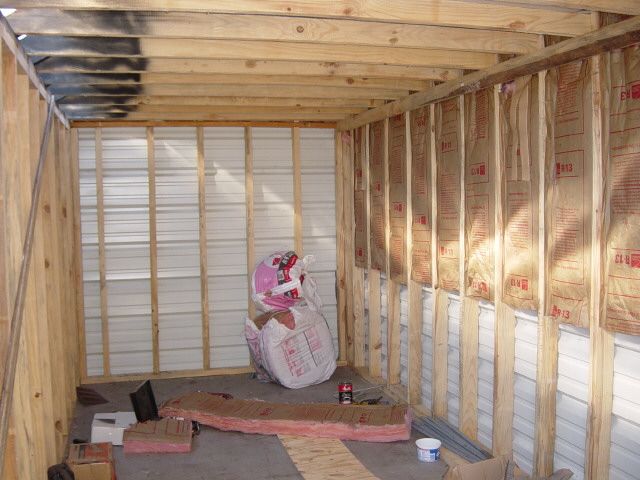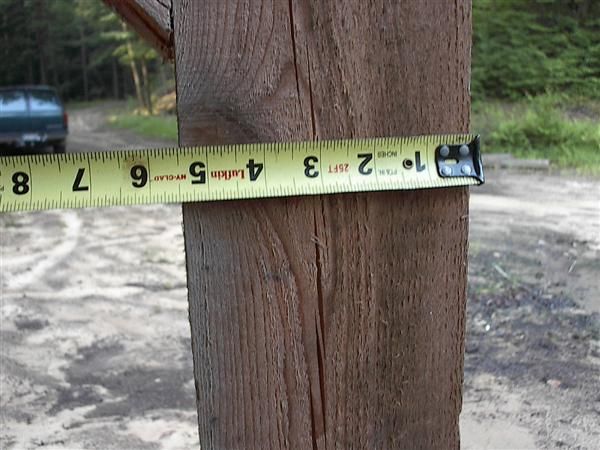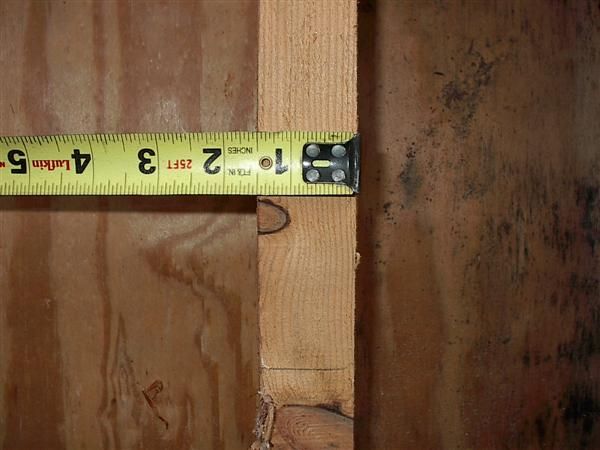Allowing for Shrinkage when Sawing Framing Lumber
If you want the lumber in service to end up comparable to commercial kiln-dried softwood framing lumber, how much thicker and wider should you saw? November 28, 2006
Question
I'm going to start sawing out a cabin. I will be using hemlock cut from the lot and air drying it. I would like to cut my 2x6's so they would be the same width (after drying) as KD dimensional lumber, to avoid problems with window and door framing. Does anyone know what width they should be cut? Also, is there any reason not to cut them full 2" x 5 and ?
Forum Responses
(Sawing and Drying Forum)
From Professor Gene Wengert, forum technical advisor:
The final size at the time of grading is 1.5 x 5.5". The length will not change as the wood dries. Different pieces of wood shrink different amounts, so to achieve the same final size, it will be necessary to send them all through a planer. So, you need a planer allowance, shrinkage allowance (based on the greatest shrinkage), and saw variation allowance in order to establish your green, sawing thickness. I cannot guess accurately what your numbers are, but maybe 3/8" extra in thickness and 1/2" extra in width, or more.
From contributor D:
Watch out for wind shake in those hemmies. I run into a fair amount of it here in PA, and am therefore inclined to cut it for use for non-structural needs, such as b&b siding, and the like.
From contributor A:
When it comes to grading... You will pick better grade lumber for your own projects than you can buy at the store. I can't believe they put a stamp on a 2x12 with a knot so big and loose, it is really a 2x8 after you figure deflection. I've rough cut pine and poplar 1/8" over for 2x4's and 3/16" for 6's. More for 10's and 12's, with no planing. This was a workshop. If you want to use sheetrock and want nice smooth interior walls, you might want to plane them. Also, wood moves with wood. Wood moves, rock will crack.
From contributor P:
If you saw to a full 2", you will need to frame with 20p nails instead of the typical 16p nails. I saw all my rough cut framing lumber to 1-3/4" o.c. with a bandsaw for the final thickness after drying (and minus the kerf) is about 1-5/8".
For width, I saw green lumber to these widths:
2X4 3-11/16" (3 16ths over)
2X6 5-3/4" (4 16ths over)
2X8 7-13/16" (5 16ths over)
2X10 9-11/16" (7 16ths over)
2X12 11-3/4 (8 16ths over)
If you saw to these dimensions, all your dried lumber should exceed the minimums that Gene quoted.
From contributor R:
I've cut a bunch of West Virginia hemlock and if you cut it 1 1/2 x 5 1/2, it will shrink about 1/16'' on the 1 1/2'' and about an 1/8'' or less on the 5 1/2.
From contributor B:
I built my kiln out of rough cut wood - I cut everything to 8/4 slabs and dried. Then I put back on the mill and edged one side. Then I put about 4 slabs on at a time with the straightlined edge down and measured up from the bottom to get the correct starting cut to end up with all 3 1/2" wide boards, figuring the kerf as waste and measuring on the widest slab. (Use 5 1/2" for your 2x6's and so on.) For most of your construction, the thickness of the board does not matter, just the width. For those that were critical, I planed. The result was that my studs ended up being about 1 7/8"x 3 1/2" with the defects being largely removed by my edging all boards after they were dry. The extra thickness only makes the boards a bit stronger.

Click here for higher quality, full size image
From contributor R:
I cut this hemlock on the Turner mill at 6/4 on the scale, and after a few years here is what it scales out today. No, I didn't cut that on the 6/4 - I cut that at 5/1/2'' on the scale.

Click here for higher quality, full size image
Here is what they dry out to at 6/4 after a few years.

Click here for higher quality, full size image
From Professor Gene Wengert, forum technical advisor:
The amount of drying depends on the final MC. In a garage or other unheated structure including a shed, the lumber will be around 12% MC. In a house wall during the heating season, the wood can be closer to 8% MC. In this drier climate, the wood will be 1% smaller. That is 1/16" in width.
The comments below were added after this Forum discussion was archived as a Knowledge Base article (add your comment).
Comment from contributor F:
I always just saw my 2 x 6's at 5 5/8" x 1 5/8" and everything always seems to turn out okay. My drywall is straight too. I mostly use fairly clear poplar and pine if the knots are small. Hemlock is some weak wood. I have some sawed up but I'll use it as a last resort. The above poster is right. It's some shake-ridden wood.


